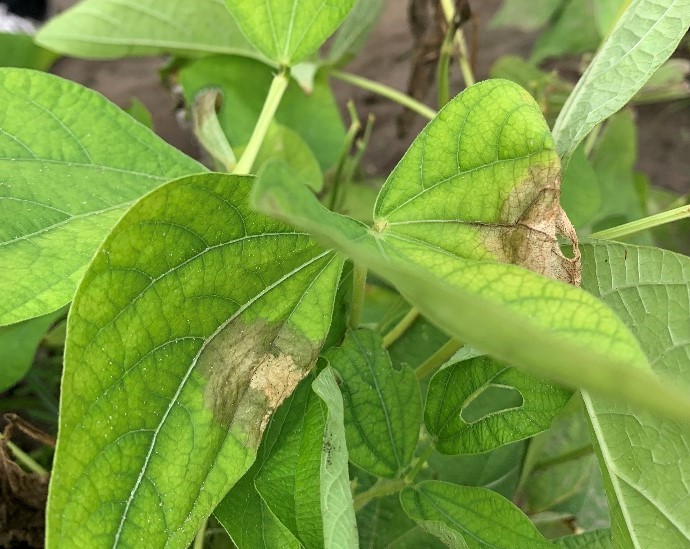Due to frequent rains, cloudy weather and high humidity, Choanephora blight or wet rot was found throughout a one-acre planting of green bean cultivars and breeding lines at Coastal Research and Education Center last week, according to The South Carolina Grower. Growers and home gardeners may see similar symptoms on late-planted beans throughout South Carolina.

Choanephora blight is a common disease on flowers, young fruit, and vine tips of squashes and pumpkins in mid-summer. It is unusual to see it on young shoots, leaves and pods of green beans. A similar outbreak on bean and pepper was reported in Florida in the fall of 2002.
The fungus, Choanephora cucurbitarum, is related to black bread mold. It produces tight clusters of black spores on white stalks that look like pins with black heads.
Since Choanephora, like most fungi, can’t swallow a whole bean like we can, it spews out its digestive enzymes ahead of where it has grown in or on the plant, the part covered with spores. The enzymes dissolve plant tissue and allow the fungus to absorb nutrients from that tissue so the pathogen can form spores.
No control measures are known for Choanephor blight. As an older colleague from California once said, sunshine is the best fungicide. Spores (the signs of the fungus) will disappear after a couple of sunny days, and spread will be greatly reduced. The Choanephora fungus is not sensitive to most vegetable fungicides. Chlorothalonil may be effective, but with a 7-day Pre-Harvest Interval, applications of this contact fungicide would not last long enough to prevent Choanephora blight on harvested pods. Choanephora blight will develop postharvest on stored beans, so beans should not be harvested from plants with symptoms on leaves or pods.









